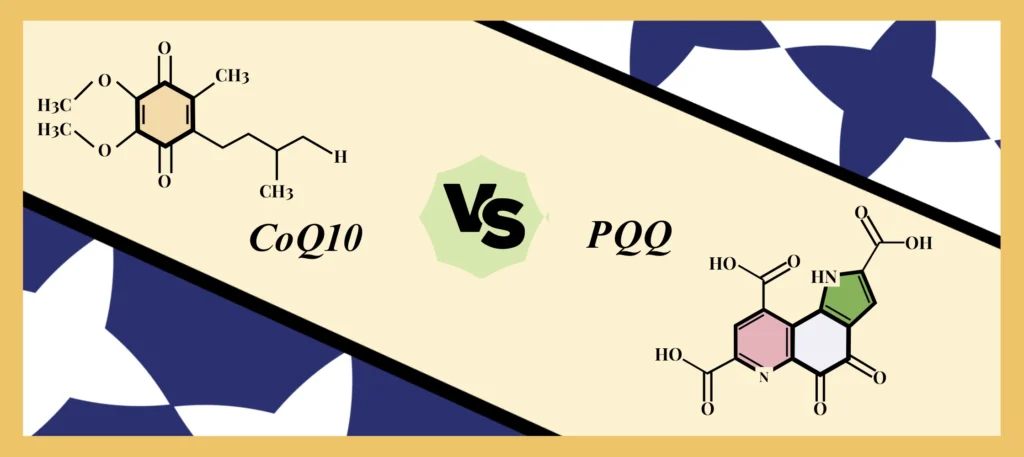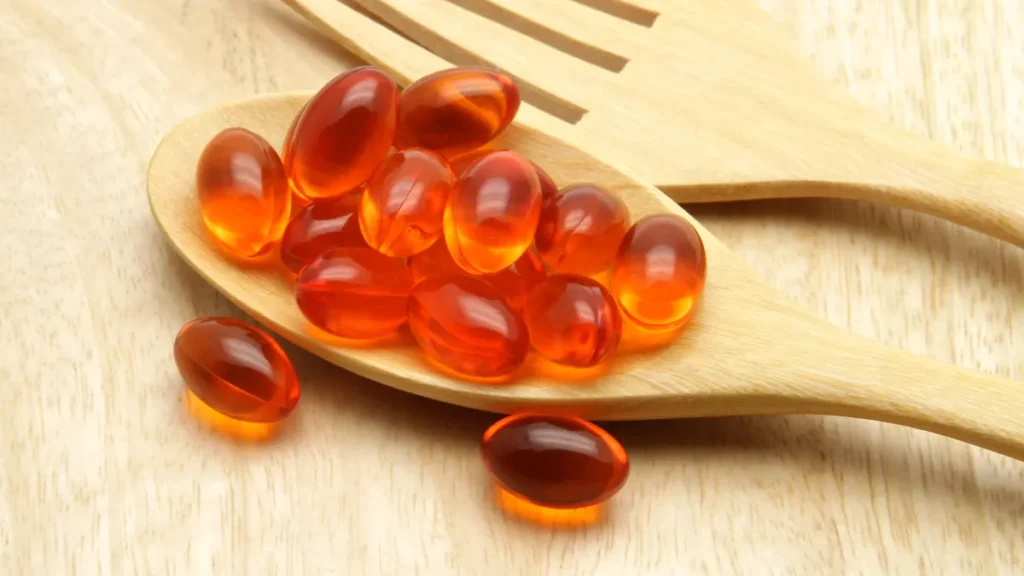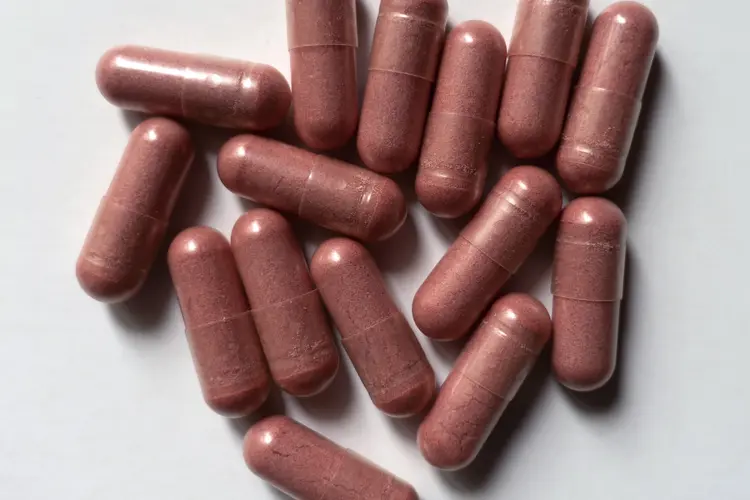That dragging feeling of fatigue, the persistent brain fog that clouds your focus, the subtle signs that you’re not as sharp as you used to be. When we talk about these common complaints, what are we really talking about on a cellular level? Often, the conversation leads straight to our mitochondria—the microscopic power plants inside nearly every cell in our bodies.
These tiny engines are responsible for generating over 90% of the energy, known as ATP (adenosine triphosphate), that fuels everything from your heartbeat to your thoughts. When they’re running efficiently, you feel vibrant, focused, and alive. But when they decline due to age, stress, or lifestyle factors, your energy levels plummet.
So, how do we support these vital power plants? Two names consistently rise to the top in the world of cellular health: 코엔자임 Q10 (CoQ10) 그리고 Pyrroloquinoline Quinone (PQQ).
You’ve likely heard of them, but the question remains: what’s the difference? Is one better than the other? Or do they work together? This guide will cut through the confusion, providing a clear comparison to help you build the best strategy for your cellular energy.
What is CoQ10? The Spark Plug for Your Cellular Engines
Imagine your mitochondria are car engines. For those engines to roar to life, they need a spark. CoQ10 is that essential spark plug. It’s a vitamin-like compound found naturally in every cell of your body, with the highest concentrations in your most hard-working organs, like the heart, liver, and kidneys.
How CoQ10 Works: Fueling ATP Production
CoQ10 plays a critical role in the final steps of cellular respiration, the process of converting the food you eat into the energy currency, ATP. It acts as a shuttle, transferring electrons between enzymes in what’s known as the electron transport chain. Without CoQ10, this energy production line would grind to a halt. It also functions as a powerful, fat-soluble antioxidant, protecting cell membranes and mitochondria from the damaging effects of oxidative stress.
The problem? Our body’s natural production of CoQ10 begins to decline as early as our 20s and can be further depleted by certain medications, most notably statins used for cholesterol management.
The Two Forms of CoQ10: Ubiquinone vs. Ubiquinol (Which is Right for You?)
This is a crucial point that many people miss. CoQ10 exists in two forms in the body:
- Ubiquinone: The oxidized form. Your body must convert it into ubiquinol to use it. This is the more common and less expensive form found in many supplements.
- Ubiquinol: The reduced, active antioxidant form. It is considered the “body-ready” form of CoQ10 and is generally more easily absorbed, especially for individuals over 40 or those whose ability to convert ubiquinone may be compromised.
For younger individuals, ubiquinone is often sufficient. However, if you are older or looking for maximum absorption and immediate antioxidant benefits, ubiquinol is widely considered the superior choice.
Key Benefits of CoQ10
- 심장 건강: As the heart is the most energy-demanding muscle, it relies heavily on CoQ10. Decades of research support its role in maintaining cardiovascular health.
- Energy Production: By directly participating in ATP synthesis, it helps combat fatigue and improve physical performance.
- Antioxidant Protection: It neutralizes free radicals, protecting cells from damage that contributes to aging.
What is PQQ? The Architect of New Mitochondria
If CoQ10 is the spark plug that keeps your existing engines running, think of PQQ as the architect and construction manager for your cells. Its most celebrated role is something CoQ10 can’t do: it stimulates a process called mitochondrial biogenesis—the spontaneous creation of brand-new mitochondria.
How PQQ Works: Mitochondrial Biogenesis Explained
But what if we could do more than just keep our existing power plants running? What if we could build new ones? This is where PQQ enters the stage. PQQ activates signaling pathways in the body (like PGC-1α) that essentially flip the switch for building new mitochondria. More mitochondria mean a greater capacity for your cells to produce energy. It’s like upgrading a city’s power grid by building entirely new power stations instead of just tuning up the old ones.
Beyond Mitochondria: PQQ’s Role as a Potent Antioxidant
PQQ is also an incredibly powerful antioxidant. Some studies suggest it can carry out thousands of times more antioxidant reactions than Vitamin C before being used up. It excels at protecting mitochondrial DNA, which is particularly vulnerable to oxidative damage.
Key Benefits of PQQ
- Cognitive Function: The brain is another high-energy organ. By promoting new mitochondrial growth and protecting neurons, PQQ has been shown in studies to support short-term memory and cognitive health.
- Nerve Growth Factor (NGF): PQQ has been found to stimulate the production of NGF, a protein crucial for the growth and maintenance of nerve cells.
- Enhanced Energy: By increasing the sheer number of mitochondria, PQQ helps raise your overall energy ceiling.
PQQ vs. CoQ10: A Head-to-Head Comparison
While both are powerhouses for cellular health, they are not interchangeable. They are specialists with distinct, yet complementary, roles.
- Core Function: CoQ10 optimizes the function of your existing mitochondria. PQQ builds new mitochondria.
- Mechanism of Action: Think of it this way: CoQ10 is the tune-up crew for your car’s engine, ensuring it runs efficiently. PQQ is the factory that builds brand-new engines to add to your fleet.
Here’s a simple breakdown:
| 기능 | 코엔자임 Q10(CoQ10) | Pyrroloquinoline Quinone (PQQ) |
|---|---|---|
| Primary Role | Energy production within mitochondria | Stimulates creation of new mitochondria |
| Analogy | 그리고 Energizer or “Spark Plug” | 그리고 Builder or “Architect” |
| Main Benefit | Improves efficiency of existing mitochondria | Increases the number of mitochondria |
| Key Health Areas | Heart health, antioxidant protection | Brain health, cognitive function, nerve growth |
| Found In | Organ meats, fatty fish, spinach | Fermented soybeans (natto), parsley, green tea |
The Power of Synergy: Why PQQ and CoQ10 Work Better Together
This isn’t a competition; it’s a collaboration. This is where the magic truly happens. Taking PQQ and CoQ10 together creates a powerful two-pronged approach to cellular energy.
A Complementary Relationship
- PQQ builds the new power plants.
- CoQ10 provides the spark to get them all running at peak efficiency.
It’s a beautiful example of biochemical teamwork, leading to a result that’s far greater than the sum of its parts. A 2010 study published in the Journal of Nutritional Biochemistry highlighted that the combination of PQQ and CoQ10 could offer enhanced benefits for cognitive performance.
Who Should Consider Taking Both?
- Aging Adults: To combat the natural decline in both CoQ10 levels and mitochondrial function.
- Athletes & High Performers: To maximize energy output and support recovery.
- Biohackers: For anyone looking to optimize cognitive function and cellular health.
- Individuals on Statin Medication: To replenish CoQ10 levels that may be depleted by the medication.
Practical Guide: Dosage, Safety, and How to Choose a Supplement
권장 복용량
- CoQ10: Doses typically range from 100 mg to 200 mg per day. When using the more bioavailable Ubiquinol form, some find 100 mg to be sufficient.
- PQQ: Standard doses are usually between 10 mg and 20 mg per day.
It’s best to take them with a meal that contains fat, as both are fat-soluble, which enhances absorption.
Potential Side Effects and Safety Profile
Both PQQ and CoQ10 are generally considered safe and well-tolerated. Some individuals may experience mild side effects like insomnia if taken too late in the day or minor digestive upset. As with any supplement, it’s wise to consult with your healthcare provider before starting.
What to Look For in a High-Quality Supplement
- Bioavailability: Look for Ubiquinol for CoQ10 and a reputable, patented form of PQQ (like BioPQQ®) to ensure you’re getting what you pay for.
- 타사 테스트: Choose brands that are transparent about their third-party testing for purity and potency. This verifies that the product is free from contaminants and contains the amount of the ingredient stated on the label.
- Clean Ingredients: Avoid products with unnecessary fillers, artificial colors, or allergens.
자주 묻는 질문(FAQ)
Is PQQ better than CoQ10?
Neither is “better”—they have different jobs. CoQ10 optimizes existing mitochondria, while PQQ helps create new ones. They are most powerful when used as a team.
Can I get PQQ and CoQ10 from food?
Yes, but in very small amounts. To get a therapeutic dose, supplementation is generally necessary. CoQ10 is found in organ meats and fatty fish, while PQQ is present in foods like natto and parsley.
How long does it take to see results?
This varies by individual, but many people report noticing benefits in energy and mental clarity within 4 to 8 weeks of consistent use.
Who should not take PQQ or CoQ10?
While generally safe, pregnant or breastfeeding women and those on blood-thinning medications should consult their doctor before taking these supplements.
Conclusion: Your Personalized Strategy for Cellular Health
The debate of PQQ vs. CoQ10 is ultimately a false choice. The real insight is understanding their powerful synergy. They aren’t rivals; they are partners in the crucial mission of keeping your cells energized and resilient.
So, my recommendation is to first assess your personal health goals:
- If your primary concern is supporting your heart health or you are taking statins, CoQ10 (specifically Ubiquinol) is a non-negotiable starting point.
- If you are focused on boosting cognitive function, memory, and long-term brain health, PQQ offers unique and compelling benefits.
- For a comprehensive anti-aging and energy-optimizing strategy, the combination of PQQ and CoQ10 is unparalleled.
By supporting your mitochondria from both angles—improving efficiency and increasing their numbers—you are giving your body the fundamental building blocks for sustained energy, mental clarity, and healthy aging.




